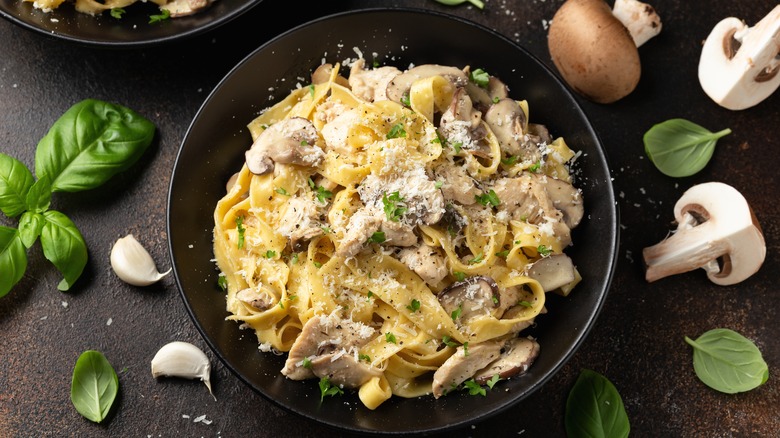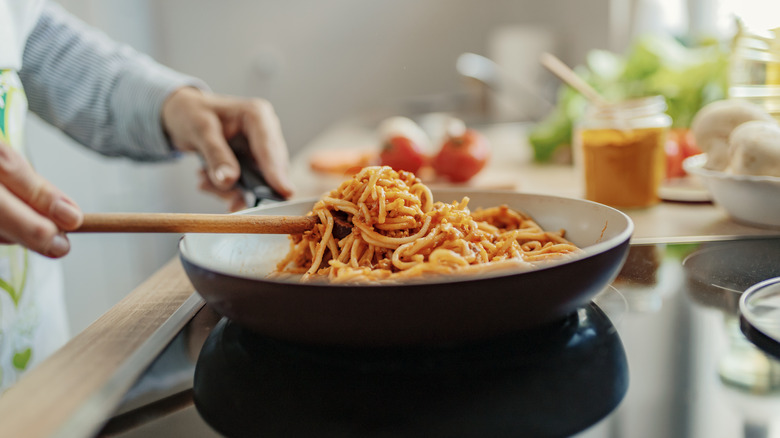Make Pasta Way Quicker By Skipping The Pot
There are hardly any downsides to pasta. It's carby, delicious, inexpensive, endlessly versatile — we could go on and on. Pasta is as no-fail as any food group is, but perhaps its only downfall is the time required to bring water to a boil. When you're in a rush to get dinner on the table, the wait can be a headache and requires forethought to time the readiness of the pasta with the completion of the sauce and other elements.
There are no shortage of hacks and tips to level up your pasta-making game, like knowing how to correctly sauce your pasta or how to cook pasta without wasting energy. As it turns out, there's also a so-simple-it's-genius way to reduce the cooking time. You've probably always reached for a large saucepan and filled it with water when cooking pasta, but just because something's always been done one way, doesn't mean it's the best way.
The depth of a hefty pot means you're waiting ages for the not-insignificant amount of water to come to a rolling boil before you can toss pasta in. Instead, reach for a wide, shallow pan, not a pot, during your next pasta night. Less volume and a shallower depth mean water boils in record time, and your pasta gets onto your plate and into your mouth faster. A true win-win.
Using a pan means less water and a shorter cook time
To try this tip, pull out your favorite pan, erring on the larger side to ensure plenty of room for the noodles to be fully submerged. You'll want to use a ceramic or nonstick option here, as it's never a good idea to boil in a cast iron skillet, which can damage the all-important seasoning layer. Then, add the dry pasta directly to the pan, fill with enough water to cover the pasta, and turn to high heat. A serious added perk to this tip is the space it affords — no more breaking long spaghetti or linguini noodles to fit into a cramped saucepan.
Unlike with the traditional method of making pasta, there's no need to wait until it the H2O comes to a boil to add your spaghetti or penne. Simply add the pasta in directly, which will give it a head start and further speed up the cook time. Don't forget the all-important step of salting your water (a crucial step that makes pasta restaurant-worthy). Once the water boils, keep a close eye on your noodles as they cook. Since they're in less water than a large pot would hold, the noodles will reach the optimal al dente texture in less time while using less energy and less water, to boot. Once cooked to perfection, drain away excess liquid, reserving plenty of that starchy magic ingredient to toss into your sauces for the perfect creamy, cohesive dish.

